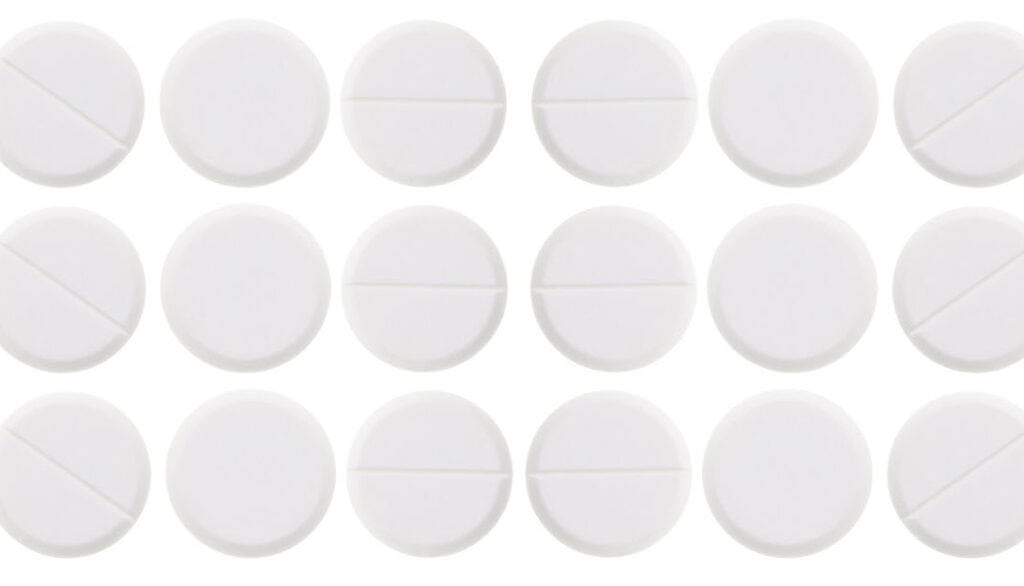As a loving pet parent, you’re always seeking the best treatments and remedies for your furry friend, especially when they’re in discomfort or pain. Enter Methocarbamol – a drug that might have cropped up during your recent vet visit or while you were scouring the internet looking for relief options for your dog.
While it may seem like just another medical term, it’s essential to understand the ins and outs of Methocarbamol for dogs to make informed decisions about their health. In this guide, we’ll unravel the mysteries surrounding Methocarbamol, from its brand names and primary uses to its dosages, side effects, and even natural alternatives. Dive in with us as we explore everything you need to know to ensure your canine companion remains safe, happy, and healthy!

What is Methocarbamol?
Methocarbamol, often known to many by its brand names, is a centrally-acting muscle relaxant that’s commonly prescribed in human medicine. It is primarily used to treat skeletal muscle spasms, those involuntary, often painful muscle contractions. The drug works by decreasing nerve impulses to the muscles, ensuring they relax and don’t contract unnecessarily.
In the context of veterinary medicine, Methocarbamol has found its way into the toolkits of many veterinarians due to its efficacy in treating various muscle-related issues in pets, including our four-legged canine buddies. Whether it’s a spasm from a sudden injury, muscle poisoning due to ingestion of certain toxins, or chronic muscle issues, Methocarbamol offers potential relief.
However, just like any other medication, it’s crucial to understand not just its benefits but also its potential side effects, interactions, and dosages. This comprehensive approach ensures we’re always prioritizing the health and well-being of our pets, administering treatments with knowledge and care. So, let’s delve deeper into the world of Methocarbamol and see how it might be beneficial for our dogs.

Methocarbamol Brand Names
When you’re browsing the shelves of your local pharmacy or listening closely during a vet appointment, you might come across Methocarbamol under various brand names. Recognizing these names can be crucial, ensuring you’re obtaining the right medication for your dog’s needs.
- Robaxin®: Perhaps the most widely recognized brand name for Methocarbamol, Robaxin is a staple in many pharmacies and is used both in human and veterinary medicine.
- Marbaxin®: Specifically formulated for pets, Marbaxin is another brand that’s tailored for veterinary use, making it a common recommendation by many vets for muscle spasm-related issues in animals.
- Skelaxin®: While not as common as Robaxin, Skelaxin is another brand under which Methocarbamol can be found, primarily used in human medicine but sometimes prescribed off-label for pets.
- Carbacot®: Another brand variant, Carbacot might not be as commonly seen as Robaxin or Marbaxin but is still Methocarbamol and can be prescribed depending on availability and a veterinarian’s preference.
It’s essential to note that while the primary component, Methocarbamol, remains consistent across these brand names, the formulations might differ slightly, especially concerning inactive ingredients. Therefore, always consult with your veterinarian about which brand is most suitable for your dog’s unique needs. It’s also a good practice to stick to the same brand throughout the treatment duration to ensure consistency unless otherwise directed by your vet.

Methocarbamol Uses in Dogs
Just like humans, our canine companions can suffer from a variety of muscle-related issues, making the need for effective muscle relaxants evident in veterinary medicine. Methocarbamol, with its proven efficacy, has been a preferred choice for several reasons.
Muscle Spasms and Inflammation:
One of the primary uses of Methocarbamol in dogs is for the treatment of muscle spasms, which can be caused by acute injuries, overexertion, or underlying health conditions. The drug helps relax contracted muscles, providing relief from pain and discomfort.
Intoxication/Poisoning:
Methocarbamol is effective in treating muscle tremors caused by the ingestion of certain toxins. For instance, if a dog ingests rat poison or certain types of insecticides, it can lead to muscle tremors or spasms. Methocarbamol helps alleviate these symptoms by relaxing the muscles.
Chronic Muscular Conditions:
Some dogs, especially as they age or due to genetic predispositions, may suffer from chronic muscle issues. Methocarbamol can be prescribed as part of the long-term management plan for such conditions.
Post-surgical Care:
After certain surgical procedures, especially those involving the musculoskeletal system, dogs may experience muscle spasms or pain. Methocarbamol can be used to manage these post-operative symptoms, ensuring a more comfortable recovery process.
Intervertebral Disc Disease (IVDD):
IVDD is a condition where the cushioning discs between the vertebrae of the spinal column either bulge or burst (herniate) into the spinal cord space. This can lead to nerve inflammation, pain, and sometimes muscle spasms. Methocarbamol can be prescribed to manage the muscle spasms associated with this condition.
While Methocarbamol serves as a versatile tool in treating a variety of muscle-related issues in dogs, it’s paramount that it’s administered under the guidance and prescription of a veterinarian. Given the diverse range of issues it addresses, correct dosage and duration are critical to achieving the desired therapeutic effects without compromising the health of our pets.

Methocarbamol Dosage Chart for Dogs
Determining the correct dosage of Methocarbamol for your dog is crucial to ensure its efficacy and safety. The dosage varies depending on the dog’s weight, the condition being treated, and the individual dog’s response to the medication. Below is a general dosage guideline; however, it’s of utmost importance to follow your veterinarian’s advice and prescription, as they’ll provide the exact dosage suitable for your dog’s specific needs.
Note: This is a general overview and should not replace a veterinarian’s recommendation.
| Weight of Dog | Typical Methocarbamol Dosage Range |
|---|---|
| Up to 10 lbs | 125 – 500 mg |
| 11-25 lbs | 250 – 1000 mg |
| 26-50 lbs | 500 – 1500 mg |
| 51-75 lbs | 750 – 2250 mg |
| 76 lbs and over | 1000 – 3000 mg |
- Frequency: Methocarbamol is typically administered 1 to 3 times a day, depending on the condition being treated and the veterinarian’s recommendation.
- Adjustments: The dosage might be adjusted based on how your dog responds to the medication. Always monitor your pet for any side effects and report them to your veterinarian immediately.
- Duration: The length of treatment will depend on the condition. For acute issues like an injury or poisoning, the treatment might be short-term. However, for chronic conditions or post-surgical care, Methocarbamol might be prescribed for a longer duration.
- Tapering Off: It’s essential not to stop the medication abruptly, especially if it has been prescribed for a longer time. Your vet might advise tapering the dosage gradually.
Remember, the above chart provides a general idea, but individual requirements can differ. Always store Methocarbamol out of reach of pets and children and use a pill dispenser or organizer to track the medication, ensuring consistent dosing and preventing accidental double doses.

Forms of Methocarbamol Available
Methocarbamol comes in various formulations to cater to the diverse needs of its users, whether they be humans or pets. Understanding these forms can help ensure you choose the one most suited to your dog’s specific requirements, ensuring ease of administration and effectiveness.
Methocarbamol Oral Tablets:
- Description: The most common form, these are solid tablets containing Methocarbamol.
- Sizes: They typically come in strengths of 500 mg or 750 mg, but it’s essential to check the packaging or prescription label for the exact dosage.
- Usage: These can be given directly or, for fussy eaters, hidden in a treat or food. Always ensure your dog consumes the entire dose.
Methocarbamol Oral Liquid:
- Description: A liquid form of Methocarbamol that can be administered with a dropper or syringe.
- Usage: Ideal for dogs who have difficulty swallowing pills or are particularly choosy about what they eat. The liquid can be given directly into the mouth or mixed with a small amount of food.
Methocarbamol Injectable:
- Description: Methocarbamol is available in an injectable form, generally reserved for more severe cases or when rapid intervention is needed, such as toxin ingestion.
- Usage: This form is typically administered by a veterinarian or under their direct supervision, especially in emergency situations.
Methocarbamol Chewables:
- Description: Similar to oral tablets but flavored and designed to be more palatable for dogs.
- Usage: These can be a great option for dogs that resist taking pills, turning medicine time into treat time.
Methocarbamol Compounded Formulations:
- Description: Some pharmacies offer compounded Methocarbamol, meaning the medication is tailored to your dog’s specific needs, especially if they require a unique dosage or a combination of medications.
- Usage: These are specially ordered by veterinarians when the standard formulations aren’t suitable.
When deciding on the form of Methocarbamol to give your dog, consider factors like your dog’s size, temperament, and any other medications or treatments they’re undergoing. Always consult with your veterinarian to choose the most appropriate form and ensure optimal efficacy and safety.

Side Effects of Methocarbamol for Dogs
Just as with any medication, while Methocarbamol can be extremely beneficial in treating muscle spasms and related issues in dogs, it’s not without potential side effects. Being informed about these will allow you to monitor your dog closely and ensure that any adverse reactions are caught and addressed promptly.
- Drowsiness or Sedation: One of the most common side effects, Methocarbamol may cause your dog to become drowsy or less alert than usual. This is generally mild and may decrease as your dog becomes accustomed to the medication.
- Weakness or Lethargy: Some dogs might appear weaker or less energetic, especially shortly after receiving a dose.
- Stomach Upset: Gastrointestinal issues such as vomiting, diarrhea, or loss of appetite can occur in some dogs. If these symptoms persist or are severe, it’s essential to contact your vet.
- Coordination Difficulties: In some cases, dogs may experience problems with coordination, appearing unsteady on their feet or having difficulty navigating their environment.
- Allergic Reactions: While rare, allergic reactions can occur. Symptoms might include difficulty breathing, swelling of the lips, tongue, or face, or hives. If you notice any of these signs, seek emergency veterinary care.
- Changes in Urination: You might notice your dog urinating more or less than usual or showing changes in the color or consistency of their urine.
- Increased Thirst or Salivation: Some dogs might exhibit an increased desire to drink or may drool more than usual.
- Eye Changes: In very rare instances, Methocarbamol can affect the eyes, leading to changes in vision or eye appearance. If you notice anything unusual about your dog’s eyes, contact your veterinarian.
- Behavioral Changes: Some dogs might become more anxious, agitated, or exhibit behaviors that are out of the ordinary.
What to Do If You Notice Methocarbamol Side Effects:
- Always keep a close watch on your dog after administering any new medication, including Methocarbamol.
- Document any side effects, noting their severity and duration.
- If the side effects are mild and short-lived, they might resolve on their own. However, if they persist or are concerning, stop the medication and consult with your veterinarian immediately.
- Never adjust the dosage or stop the medication abruptly without consulting your vet.
It’s worth noting that while side effects are possible, many dogs tolerate Methocarbamol well when administered at the correct dosage and under a veterinarian’s guidance. Being informed and observant ensures your dog receives the benefits of the medication while staying safe.

Cautions When Using Methocarbamol for Dogs
Administering Methocarbamol to your canine companion requires vigilance and awareness of certain precautions to ensure their safety. Here are some important cautions to keep in mind:
- Pre-existing Conditions: Dogs with certain medical conditions, including kidney or liver disease, may not be ideal candidates for Methocarbamol, or they may require adjusted dosages. Always provide your veterinarian with a complete medical history of your dog before starting the medication.
- Pregnancy and Lactation: The effects of Methocarbamol on pregnant or lactating dogs are not well-documented. If your dog is pregnant, nursing, or you plan to breed, consult with your veterinarian before administering the drug.
- Long-term Use: If Methocarbamol is prescribed for an extended period, regular check-ups and possibly periodic blood tests might be recommended to monitor liver and kidney function and ensure no adverse effects are developing.
- Concurrent Medications: Methocarbamol can interact with other medications your dog might be taking. Always inform your veterinarian about all medications, supplements, or over-the-counter drugs your dog is on.
- Abrupt Cessation: Avoid suddenly stopping Methocarbamol, especially if your dog has been on it for a while. Your veterinarian might recommend a tapering schedule to prevent potential withdrawal symptoms or flare-ups of the condition being treated.
- Overdose: Always ensure that Methocarbamol is stored out of reach of pets and children. If you suspect an overdose, seek emergency veterinary care immediately. Symptoms might include severe drowsiness, difficulty breathing, loss of coordination, or seizures.
- Environmental Stress: Dogs on Methocarbamol may be more sensitive to abrupt environmental changes, loud noises, or other stressors. Consider this when planning events or activities that might be stressful for your pet.
While Methocarbamol can be a beneficial medication for many dogs, it’s essential to approach its use with an abundance of caution.

Methocarbamol Drug Interactions
When using medications, understanding possible drug interactions is paramount for ensuring safety and efficacy. Methocarbamol, like all drugs, has the potential to interact with other medications. Being informed of these interactions allows for more informed decisions and better care for your pet.
- Central Nervous System (CNS) Depressants: Medications that depress the central nervous system can have their effects enhanced when combined with Methocarbamol. This includes drugs like:
- Benzodiazepines (e.g., diazepam, alprazolam)
- Opioid pain medications (e.g., tramadol, morphine)
- Certain antihistamines (e.g., diphenhydramine)
- Anesthetic agents
- Anticholinergic Drugs: Some drugs have anticholinergic effects, and when combined with Methocarbamol, might lead to increased side effects.
- Examples include certain antihistamines, tricyclic antidepressants, and some antispasmodics.
- Pyridostigmine: This drug, used for conditions like myasthenia gravis, might have its effects reduced when given with Methocarbamol.Effect: Reduced efficacy of pyridostigmine, potentially leading to a flare-up of myasthenia gravis symptoms.
- Other Muscle Relaxants: Combining Methocarbamol with other muscle relaxants might lead to additive effects.
- Examples include baclofen and tizanidine.
- Monoamine Oxidase Inhibitors (MAOIs): These are a class of antidepressants. When combined with Methocarbamol, there might be enhanced effects of the MAOI.
- Examples include selegiline or tranylcypromine.
Key Takeaways
It’s essential to understand that the above list isn’t exhaustive, and individual dogs might react differently to medication combinations. The key takeaways are:
- Always inform your veterinarian about any and all medications, supplements, or over-the-counter products your dog is taking.
- If a new medication is prescribed for your dog, remind your veterinarian that your pet is on Methocarbamol.
- Monitor your dog closely when starting a new medication or adjusting the dose of a current one. Note any changes in behavior, health, or side effects.
- If you suspect a drug interaction or see adverse reactions, contact your veterinarian immediately.
Being proactive and informed about potential drug interactions ensures that Methocarbamol remains a beneficial tool in your dog’s health regimen without posing unnecessary risks.

How Long Does Methocarbamol Last?
How Long Does Methocarbamol Last in Dogs?
Understanding the duration of action of Methocarbamol in dogs is vital for several reasons. It aids in determining the dosing frequency, understanding when its effects will peak and wear off, and it can provide clues about when side effects might become evident or abate. Here’s what you should know:
- Onset of Action: After administering Methocarbamol, especially in oral forms, you can generally expect to see its effects begin within 1 to 2 hours. This can vary depending on the dog’s metabolism, the presence of food in the stomach, and the specific condition being treated.
- Peak Effects: The maximum therapeutic effect of Methocarbamol is typically observed within 2 to 4 hours post-administration. This is when the drug’s concentration in the bloodstream is highest.
- Duration of Action: The effects of Methocarbamol, depending on the dosage and individual differences among dogs, typically last between 4 to 6 hours. This means that for continuous relief, the medication may need to be administered multiple times a day, as advised by your veterinarian.
- Elimination Half-life: The half-life of a drug refers to the time it takes for half of the drug’s active amount to be eliminated from the body. For Methocarbamol, the half-life in dogs ranges between 1 to 2 hours. However, just because the drug’s concentration reduces by half doesn’t mean its effects entirely stop. It simply begins to taper off.
- Complete Elimination: Most of the Methocarbamol dose will be eliminated from a dog’s system within 8 to 12 hours. This duration can be longer in dogs with liver or kidney issues, as these organs play a crucial role in processing and excreting the drug.
Points to Consider:
- The frequency of dosing will often be determined by the specific condition being treated and the severity of symptoms. While some dogs might require multiple doses a day, others might do well with just one dose.
- Methocarbamol’s effects might vary slightly based on the formulation. For instance, injectable forms might act quicker but might also be eliminated faster.
- Always monitor your dog after administering the drug to understand how long it takes for it to begin working and when its effects start to wane.
- If you ever miss a dose, consult with your veterinarian about the best course of action. Avoid doubling up on doses unless specifically directed.
In conclusion, while the general durations are provided here, it’s crucial to remember that individual dogs might process and respond to Methocarbamol slightly differently. Always adhere to your veterinarian’s guidance regarding dosing frequency and monitor your dog for optimal therapeutic benefits.

How to Give Methocarbamol to Your Dog
Administering medications to dogs can sometimes be a challenging task. The key to success lies in patience, gentle handling, and often a bit of ingenuity. Here are step-by-step instructions and tips for giving Methocarbamol to your dog:
1. Read the Prescription Label:
- Always start by reading the label to ensure you’re giving the correct dosage. It will also indicate how often to administer the medication.
2. Prepare the Medication:
- If the Methocarbamol is in pill form, take out the necessary number of tablets or portion of a tablet.
- For liquid forms, ensure you have the correct measurement ready in a syringe or dropper.
3. Position Your Dog:
- If your dog is small, place them on a non-slip surface at a comfortable height, like a table with a towel or mat.
- For larger dogs, it might be easier to administer the medication while they’re standing or sitting.
4. Administering the Pill:
- Hold the pill between your thumb and index finger.
- Use your other hand to gently open your dog’s mouth by pressing the lips against the teeth and tilting the head slightly upward.
- Place the pill as far back on the tongue as possible.
- Close the mouth and gently hold it shut. Blow softly on your dog’s nose or stroke their throat to encourage swallowing.
5. Administering Liquid Medication:
- Hold the syringe or dropper containing the Methocarbamol liquid.
- Gently open your dog’s mouth and insert the tip of the syringe or dropper to the side, between the teeth and cheek.
- Slowly push the plunger to release the medication, allowing your dog time to swallow.

6. Offer a Treat or Food:
- After successfully administering the medication, offer a small treat or some food. This can act as a reward and can also help ensure the pill is swallowed if hidden in the treat or food.
- There are special pill pockets available in pet stores that can be used to hide the pill, making it easier for your dog to ingest.
7. Liquid Mixing:
- If you have difficulty administering liquid directly, consider mixing it with a small amount of a tasty liquid treat, like low-sodium broth, provided it’s approved by your vet.
8. Monitor for Reactions:
- Especially the first time you administer Methocarbamol, watch your dog for a few minutes to ensure they don’t vomit or show signs of an adverse reaction.
9. Store the Medication Properly:
- Ensure Methocarbamol is stored as per the manufacturer’s guidelines, typically in a cool, dry place away from sunlight. Always keep it out of reach of children and pets.
Tips:
- Consistency is key. Try to administer the medication at the same times each day.
- If your dog is particularly resistant, consider asking your vet if a different form of the medication (like liquid instead of pills) might be available.
- Some dogs might be pill-averse. Using a pill dispenser tool, available at pet stores, can help in such cases.
Always remember to handle your dog gently and with patience. If you’re calm and reassuring, it’ll make the process smoother for both of you. If you consistently struggle with administering the medication, don’t hesitate to reach out to your veterinarian for alternative solutions or additional guidance.

Complementary Natural Products To Methocarbamol That You Can Add to Your Treatment Plan
When using Methocarbamol for conditions like muscle spasms in dogs, many pet owners are drawn to natural remedies. These products can potentially enhance the effects of Methocarbamol or provide support in ways traditional medications might not cover. Their organic nature makes them a favorite for those leaning towards a holistic approach to canine health. Nevertheless, always discuss with your vet before incorporating any of these into your pet’s treatment plan. Here’s a closer look at some popular natural alternatives:
- Note: There is no direct OTC alternative and you should not stop this medication unless your supervising veterinarian directs you to.
- The following are products that support your dog, and are not direct replacements for any medication.
- These are complementary products that can be added to your treatment plan without interfering with your dog’s medication.
Glucosamine and Chondroitin
- Benefits: A go-to for many, these supplements are recognized for boosting joint health and alleviating arthritis symptoms, making them suitable for muscle spasms linked to joint concerns.
- How to use: Look for dog-specific chewable tablets, capsules, or liquids.
Omega-3 Fatty Acids (Fish Oil)
- Benefits: Renowned for their anti-inflammatory attributes, Omega-3s are a boon for dogs dealing with muscle or joint inflammation.
- How to use: Whether in liquid or soft gel capsule form, ensure the product is free of harmful contaminants.
Turmeric (Curcumin)
- Benefits: A powerhouse of anti-inflammatory and antioxidant properties, turmeric can be instrumental in minimizing pain and inflammation.
- How to use: While available in powders and capsules, if opting for the raw spice, pair with black pepper to improve absorption.
CBD Oil
- Benefits: CBD has become a focal point for its potential in reducing inflammation, pain, and relaxing muscles.

Massage and Physical Therapy
- Benefits: Not a product per se, but techniques like massage can significantly relieve muscle tension, enhance blood flow, and foster relaxation.
- How to use: Engage with professionals, either a canine massage or physical therapist, for the best results.
Essential Oils
- Benefits: Oils, especially lavender, are believed to instill calmness and diminish anxiety, valuable if stress triggers your dog’s spasms.
- How to use: Use diluted essential oils, ensuring their safety for canines. Employ a diffuser or seek guidance from a holistic vet.
Vitamin E
- Benefits: An excellent antioxidant, Vitamin E, can bolster muscle health and contribute to general wellness.
- How to use: Available as capsules or liquids, it’s vital to adhere to the right dosage as per your dog’s weight.
Bach Flower Remedies
- Benefits: Some advocates argue that certain flower essences, like the Rescue Remedy, can help balance a pet’s emotions, indirectly aiding muscle issues.
- How to use: Administer the drops directly or add to water.
Probiotics
- Benefits: Even though they don’t directly target muscles, a well-maintained gut promotes general health, possibly aiding quicker recovery.
- How to use: Go for probiotics designed specifically for dogs, available in various forms like powders, capsules, or chews.
In closing, while these natural solutions can offer supplementary benefits, they shouldn’t substitute Methocarbamol or any other prescribed medications. Always keep your vet in the loop about any natural products you’re eyeing to prevent any potential complications or interactions.

Conclusion
Methocarbamol is a potent medication that can offer significant relief to dogs suffering from muscle spasms and related conditions. Like all medications, it’s crucial to approach its use with care, understanding both its benefits and potential risks. By taking the time to research and become informed – as you’ve done by reading this article – you’re taking an essential step towards ensuring your furry friend’s well-being.
Always remember the importance of a veterinarian in any treatment plan. Whether you’re exploring complementary natural products or just seeking advice on dosing, their expertise is invaluable. Your dog’s health and safety should always be the top priority.
In the end, it’s the love, care, and attention we give to our pets that make the most significant difference. Medications like Methocarbamol are tools in our arsenal to ensure their comfort and quality of life. By combining these tools with an informed, proactive approach, you’re doing the best for your canine companion.
Frequently Asked Questions
Methocarbamol is a muscle relaxant primarily used to treat muscle spasms in dogs. It helps by decreasing nerve impulses that cause muscle spasms, providing relief to the affected animal.
Yes, Methocarbamol is available under various brand names, with Robaxin being one of the most popular ones.
The frequency of administration depends on the dog’s condition and the veterinarian’s recommendations. Always follow the prescription label and consult your vet for dosage instructions.
Yes, there are complementary natural products such as glucosamine, chondroitin, omega-3 fatty acids, and CBD oil that can be considered. However, always discuss with your vet before adding any supplement to your dog’s treatment.
Common side effects include drowsiness, dizziness, and stomach upset. If you observe any unusual behavior or symptoms in your dog, contact your veterinarian immediately.
Yes, Methocarbamol can interact with certain drugs, affecting its efficacy or causing adverse reactions. Always inform your veterinarian about any other medications your dog is taking.
The duration of effectiveness varies, but Methocarbamol generally lasts for several hours. Always adhere to the prescribed dosing schedule for optimal results.
If you miss a dose, give it as soon as you remember. However, if it’s close to the next scheduled dose, skip the missed one and continue with the regular schedule. Avoid giving double doses.
Always administer the prescribed dosage and watch for any allergic reactions. Avoid use in dogs with kidney or liver disease without consulting a vet.
While the active ingredient might be the same, the dosage and formulation could differ. Always consult with your vet before giving any human medication to your pet.
